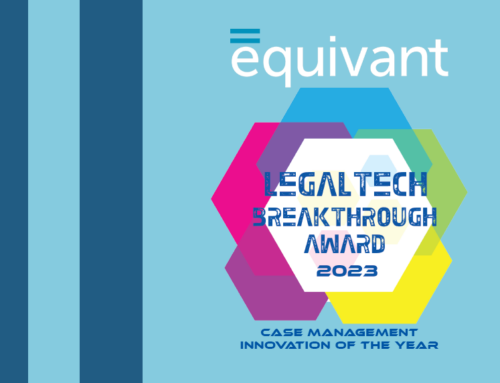3 Things We Should Be Talking About When It Comes to Validated Assessments
The Northpointe Suite • An equivant product

Every day, we make life-altering recommendations and decisions, from pretrial release to probation conditions to reentry and parole. There’s no lack of available information about tools and evidence-based principles, all intended to help supervision professionals align our practices with the EBP body of research. So many conversations are centered around the risk-needs-responsivity model that it’s nearly impossible to avoid hearing how validated risk and needs assessments enhance these decision-making processes.
And that has us thinking… if there are validated assessments, are there also unvalidated ones? Does it really matter which we choose as long as we’re using an assessment tool?
To answer these questions, we can level-set on a few assessment basics:
- that these assessments ask a set of scientifically qualified questions about a person,
- that they provide insights about the offender’s criminogenic background and likelihood of recidivating,
- and that they offer recommendations on decisions like where to place the offender or what level of intervention or supervision they may require.
But beyond those generalities, questions linger.
How do validated assessments interrelate with our own human judgment?
What is the importance of identifying an offender’s needs in addition to their risks?
And what does “validated” even mean?
Below are three important things to keep in mind as we continue the conversation around the power of validated assessments and how they can help evolve criminal justice processes and practices.
#1: The Real Meaning of “Validated”
Realizing that all assessments are not created equal, we think we’re in pretty good hands if it bears the stamp of being “validated” or even “nationally validated.” If a tool is touted as validated it’s vital to lean in and find out more. How was the validation test conducted? Was it peer-reviewed through independent research? Was it “normed” against a local population? Did these various tests and research studies verify successful outcomes?
Validation is essential because it means that the creators of the tool have successfully done two things: 1) they’ve carefully calibrated their instrument using factors based on scientific evidence to predict the future behavior of offenders as accurately as possible, particularly their risk of re-offending. And 2), they’ve put their test to the test, demonstrating that their instrument reliably measures what it’s supposed to measure.
Psychology and criminology research communities recommend that an assessment tool yield accurate predictions at least 65% of the time. Any “validated” tool should be repeatedly scrutinized to determine its overall success rate (e.g., comparing the assessment’s initial prediction against the offenders’ actual behavior). For example, if an assessment claimed John Doe would reoffend within three months of being released into the community, did he in fact do so? We can test this data to make sure the assessment got things right at least 65% of the time. All these numbers and scientific tests mean one thing: a “validated” assessment tool isn’t just something the developers think might work. The proof is in the data.
#2: Needs Are as Important as Risks
If we’re only gauging an offender’s likeliness to recidivate (and, in the case of pretrial, their risk of failure to appear) we’re only doing half the job. For the good of the individual and their community, we must consider the needs of the offender in addition to the risks they pose. Changing criminal behavior requires a desire to understand human behavior. It is often only possible by connecting the right intervention and resources (what) to the right people (who) at the right time (when).It’s important to recognize that under- or over-treating these behaviors may be equally harmful, and doing so may work against a well-intentioned rehabilitation program.
Think of it like a doctor prescribing medicine to a patient; not only would the doctor want to prescribe medication that properly treats the patient, she will avoid prescribing medication the patient does not need. Likewise, in supervision if we neglect to carefully consider individual needs when planning intervention, we may end up placing offenders in unnecessary programs or making decisions detrimental to their rehabilitation.
Validated assessments can identify a comprehensive snapshot of a person’s primary needs and help limit the potential harm and waste of resources that agencies encounter with programming based on guesswork or prescribed formulas. The outcome? Incarcerated populations drop, recidivism decreases, and our communities remain safe and thriving.
#3: No Decision Should Be Made in a Vacuum
It might be tempting to think that our judgment is infallible or that our professional experience serves as a sharp enough assessment tool to complete our jobs. No matter our capacity for insight or the number of years under our belt, we are still human after all. And that means we get tired, have bad days, own some biases (unconscious or not), and make mistakes. Even if our judgment is keen and seemingly unfailing, our decisions still should not be made in a vacuum. Consider that doctors who have years of experience don’t simply prescribe medicine and treatments based on opinion and gut instinct alone. They use empirical observations and data shared across a vast information network to refine their diagnoses. Likewise, our common sense and educated judgments need the support of tried-and-true evidence-based practices, especially given the volume of consequential decisions we make every day. Like similar practices in the healthcare and mental health communities, validated assessments don’t replace but rather fortify our sound judgment.
The conversation around validated assessments is complex – and for good reason: The impact of our decisions carry high stakes indeed. By embracing data-driven information and leveraging the full suite of tools at our disposal, we can be part of a marked change towards providing increased rehabilitation and community wellness.
Want to continue the conversation about evidence-based assessment tools? Get in touch.





